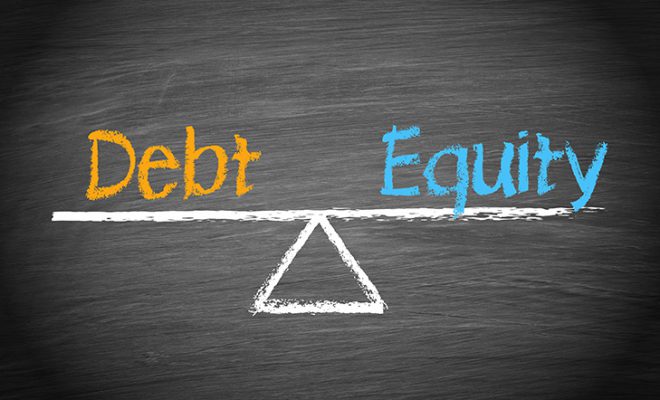Key Trends and Concerns for Investors in 2023

The year 2022 had its ups and downs. The economic strain of the pandemic continued. The record inflation and the global financial turmoil caused by the Ukraine-Russia war are other striking concerns. However, as you look ahead to 2023, there are a number of key trends and concerns that you may want to keep an eye on. A lot of investors use the New Year to review their portfolios, change asset allocations, and prepare for the coming months. This is the right time to find out about future investment trends and concerns that may impact you financially.
The increasing importance of renewable technology and the digital economy is likely to continue in 2023. Sustainability and socially responsible investing are also becoming increasingly important, with more investors looking for opportunities to invest in companies that positively impact the environment and society. The popularity of alternative investments, cryptocurrencies, and Non-Fungible Tokens (NFTs) is also growing as young investors take over the market. Meanwhile, macroeconomic factors such as inflation, interest rates, unemployment, and economic growth will continue to play a role in investment decisions. If you need guidance on how to navigate your finances in 2023, consider consulting with a professional financial advisor who can advise you on the same.
Here are some investing trends for 2023 that will likely affect your investment and savings decisions for the year:
Table of Contents
1. Inflation
Inflation was one of the primary concerns for people in 2022. The country saw extreme inflationary periods, impacting salaries, purchasing powers, and investments. The Consumer Price Index (CPI) reached a 40-year high of 9% in June 2022. The Fed announced interest rate hikes six times in 2022. Many experts believe that the Fed will also continue raising interest rates in the first half of 2023. However, some believe that the government will eventually lower interest rates to 3% by the end of the year. Supply chain disruptions due to the pandemic and the Ukraine-Russia war have contributed immensely to inflation. However, some investments may help in this scenario.
Investors may benefit from investing in inflation-protected instruments like the Treasury Inflation-Protected Securities (TIPS). TIPS are a type of U.S. Treasury bonds issued by the U.S. government. These bonds offer inflation protection as their interest rates increase when inflation rises and vice versa. Moreover, they also give you the inflation-adjusted invested capital at maturity. So, they can be one of the best investments in 2023 to tackle inflation.
2. Rising interest rates
The country’s interest rates will be affected by inflation on the rise. Interest rates and inflation are directly correlated. When inflation is high, interest rates are increased, so people spend less. When spending is reduced, people save more money, which helps them tackle inflation. On a broader level, reduced spending lowers the market demand for goods and services, which in turn helps to lower inflation. Higher interest rates increase the costs of borrowing for consumers and companies, which in turn, impact profits and overall economic growth.
With inflation expected to be a problem in 2023, investors need to be wary of high-interest rates.
This can impact bonds. Interest rates and bonds are inversely related. So, when the interest rates increase, bond prices fall, and vice versa. However, investors must keep in mind that a long-term investment horizon when investing in bonds can help eliminate interest rate risk. In most cases, losses incurred due to interest rate hikes are paper losses or losses only realized on paper and not in reality. Investors can avoid this by not selling the bond in the short term and holding it till maturity.
Interest rate hikes can also affect stock prices. Even though the impact is not direct as in the case of bonds, a high cost of loans affects companies and their output, ultimately disturbing their stock prices. It is important to note that stocks, too, can be ideal for the long term, and investors can evade these losses by keeping a long-term investment horizon. It also helps to maintain a diversified portfolio of stocks and bonds to not be severely harmed by hikes in interest rates. Investors can also continue using savings accounts and Certificates of Deposit (CDs) as their interest rates are usually favorable when Fed interest rates are increased.
3. Keep a close eye on cryptocurrency
Cryptocurrencies saw a major downfall in 2022, especially the altcoins like Bitcoin, Cardano, Sandbox, etc. After FTX, the once third-largest centralized cryptocurrency exchange, fell into bankruptcy in the U.S., a lot of investors withdrew their holdings from centralized exchanges like Coinbase. The FTX debacle severely affected the crypto market leading to the loss of billions of dollars and dropping below $1 trillion. Most Bitcoin investors are now moving to hard wallets. Cryptocurrencies have always been risky and can be suitable for those with a high-risk appetite. Cryptocurrencies are also prone to cyber threats. Cyberattacks are only getting better and more sophisticated with new technology.
Investors can note that most altcoins follow Bitcoin. Therefore, monitoring Bitcoin can be helpful. If Bitcoin is up, others are likely to outperform, and if Bitcoin is down, the others are likely to go further down. Whether or not cryptocurrency is among the best investments in 2023 will depend on the government’s cryptocurrency regulations. However, it is recommended that investors research well and invest cautiously.
4. Hybrid Robo advisors may become more popular
Financial advisors are an integral component of financial planning. In 2023, hybrid Robo-advisors may attract more investors. A hybrid Robo-advisor is a financial advisory service that combines the use of technology with the support of human financial advisors. They use computer algorithms to provide investment advice while also offering the option to work with a human financial advisor for additional support and guidance. Hybrid Robo-advisors are ideal for investors comfortable with technology. They offer automation to manage your finances and the option of receiving personalized support and advice from a human financial professional. They can be particularly useful for novice investors who may not have a lot of experience in the financial markets but want to start investing their money in a smart and disciplined way.
The reason why Robo-advisors are likely going to be one of the emerging financial advisor trends in 2023 is because of their cost-effective model. One key advantage of hybrid Robo-advisors is that they can provide investment recommendations and financial guidance at a lower cost than traditional human financial advisors. This is because the use of technology helps automate many of the tasks involved in managing an investment portfolio, such as portfolio rebalancing, monitoring investments, tax planning, tax-loss harvesting, etc. As a result, hybrid Robo-advisors can offer a more affordable way for investors to get the support they need to make informed investment decisions. With inflation and low wages likely to upset most people in 2023, affordable hybrid Robo-advisors are expected to be a popular choice this year.
5. Investments in renewable energy
The Inflation Reduction Act, which is the largest clean energy investment in the history of America, came into force in 2022. The cost of renewable energy is rampantly increasing and coming in the way of sustainability goals for most companies. The Inflation Reduction Act is expected to lower renewable energy prices over the long term, promote clean energy, and increase the domestic manufacturing of renewable energy in the country. As per the Congressional Budget Office (CBO), the act can reduce budget deficits by $237 billion over the next ten years.
2023 may see high demand for electric vehicles, solar panels, and others. In fact, apart from EV giants like Tesla and Toyota, the market will see companies like Ford, Rivian, Lucid, and Chevy in the EV markets too. 2023 can be an exciting time for renewable energy, and investors can benefit from keeping an eye on this sector. The act also offers tax credits by making EVs, energy-efficient home appliances, geothermal heating, etc., more affordable. This will help to lower emissions and allow people to save money. For instance, EVs will get you a tax credit of up to $7,500 for new vehicles and $4,000 for used vehicles in 2023.
6. Mass layoffs may continue
The U.S. mass layoffs caused considerable uproar around the world, with several tech companies shrinking their employee counts. With an impending recession this year, employees can expect more layoffs. While college graduates and entry-level employees may not be as severely affected, the mid-career one may be at risk. The tech sector can be particularly harmed. An unexpected layoff can impact your purchasing power, lifestyle, and future goals. Mass layoffs also significantly impact the economy, both at the local and national levels. When companies lay off employees, it can reduce consumer spending, as individuals who have lost their jobs will have less disposable income to spend on goods and services. This reduction in consumer spending can then lead to a decline in business activity and economic growth. Layoffs can also contribute to an increase in unemployment, as the number of people looking for work but cannot find it increases. This can have a negative ripple effect on the economy, as high levels of unemployment lead to a decrease in consumer confidence and further reductions in consumer spending. In addition to the direct impact on consumer spending and unemployment, layoffs also indirectly affect particular industries and sectors. For example, if a significant number of people are laid off in a specific sector, it can lead to a decline in the demand for goods and services related to that industry. This, in turn, can lead to further job losses and economic downturns.
Maintaining an emergency fund to tackle unexpected unemployment may be recommended this year. There is no way to ensure job security in the current and future climate. However, individuals can be ready with sufficient emergency funds to sustain themselves and take care of essential expenses like insurance premiums, groceries, mortgage payments, etc.
7. Need for alternative investments
Alternative investments are one of the future investment trends to look out for in 2023. Although alternative investments have more or less dominated the investment portfolios of seasoned or high-net-worth investors, it may be time for the average investor also to jump in. Regular investments include asset classes like stocks, bonds, and cash. Alternative investments include financial assets other than these typical asset classes. Some common examples include real estate, collectibles, art, etc., as well as hedge funds, private equity, venture capital funds, fund of funds (FOF), and even cryptocurrency.
Alternative investments carry higher risks, but they can also deliver higher returns. They can be ideal for diversification and also provide protection against inflation. Moreover, given the unpredictability of job security in 2023, some alternative investments like real estate can also be used to generate a secondary source of income. One of the most significant benefits of investing in alternative investments is that they are not directly correlated to the stock market. Hence, they can offer a hedge against market volatility, too.
However, keep in mind that alternative investments are not regulated by the U.S. Securities and Exchange Commission. Therefore, they may lack transparency. They may also require higher investment values, further accentuating the risk factor.
To summarize
The world of investing is constantly evolving, which is why it is paramount for investors to stay up-to-date on future investment trends, and make informed decisions about their investments. The above-mentioned trends in the article are only some of the trends to watch out for in the future. However, the markets can be impacted by several more factors that could bring both investment opportunities and risks for investors. For example, demographic shifts and changing consumer preferences are also likely to impact the investment landscape, making it essential for investors to pay attention to these trends as well. Ultimately, the key to success in investing is to stay informed, diversify your portfolio, and make decisions that align with your financial goals and risk tolerance. It is also essential for investors to remember that past performance is not indicative of future results, and that future trends are speculations that may or may not pan out with complete accuracy.
However, it can still help to stay up to date with above-mentioned investing trends. Investors may also consider hiring a professional to take advantage of and navigate the 2023 financial trends. WiserAdvisor’s free advisor match service can help you find a suitable professional to navigate your finances. Answer a few simple questions, and the match tool will help connect you with 1-3 advisors best suited to help with your specific financial requirements.


















